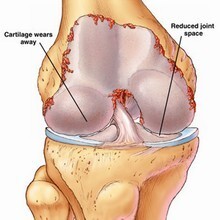by
Barbara Kram, Editor | February 11, 2009
A new study demonstrates that a chemical mediator in the blood that influences immune cell migration also plays a key role in maintaining the balance between the build-up and breakdown of bones in the body. This mediator, which acts on cells that degrade bone, may provide a new target for scientists developing therapies and preventions for bone-degenerating diseases such as osteoporosis and rheumatoid arthritis.
The study comes from the laboratory of immunologist Ronald Germain, M.D., Ph.D., at the National Institute of Allergy and Infectious Diseases (NIAID), part of the National Institutes of Health. A report describing the project, conceived by Masaru Ishii, M.D., Ph.D., a visiting fellow from Osaka University in Japan, appears online in Nature.
Bone is a dynamic tissue, constantly undergoing growth and degradation. Bone degeneration, also known as bone resorption, is caused by specialized cells called osteoclasts. Immature osteoclasts circulate within the blood and migrate to the surface of the bones, where they mature and start to degrade the bone matrix. Osteoclasts are the only cells known to degrade bone.




Ad Statistics
Times Displayed: 37104
Times Visited: 1006 Stay up to date with the latest training to fix, troubleshoot, and maintain your critical care devices. GE HealthCare offers multiple training formats to empower teams and expand knowledge, saving you time and money
Normally bone resorption is balanced by the activity of bone-forming cells, called osteoblasts. In people with bone-destructive disorders such as osteoporosis, however, osteoclast activity outpaces osteoblast activity, leading to a loss of bone density.
"Most current therapies for bone-degrading diseases target mature osteoclasts," says NIAID Director Anthony S. Fauci, M.D. "Understanding how immature osteoclasts are recruited to the bone in the first place and targeting the signals that control that migration represents a potential new approach to treating and preventing debilitating joint and bone diseases." In the United States, approximately 1.5 million fractures per year are attributed to the bone-weakening effects of osteoporosis.
As a rheumatologist who treats people with bone diseases, Dr. Ishii became interested in understanding what signals control immature osteoclast recruitment. He knew that cells can migrate to specific sites in the body in response to chemical mediators in the blood known as chemokines or chemoattractants. These molecules act like homing signals, telling cells that have certain receptors to move toward or away from certain tissues in the body.
Previously, Dr. Ishii had discovered that the chemoattractant sphingosine-1-phosphate (S1P), which is associated with the trafficking of immune cells into and out of the lymph nodes, also caused immature osteoclasts to mobilize.

